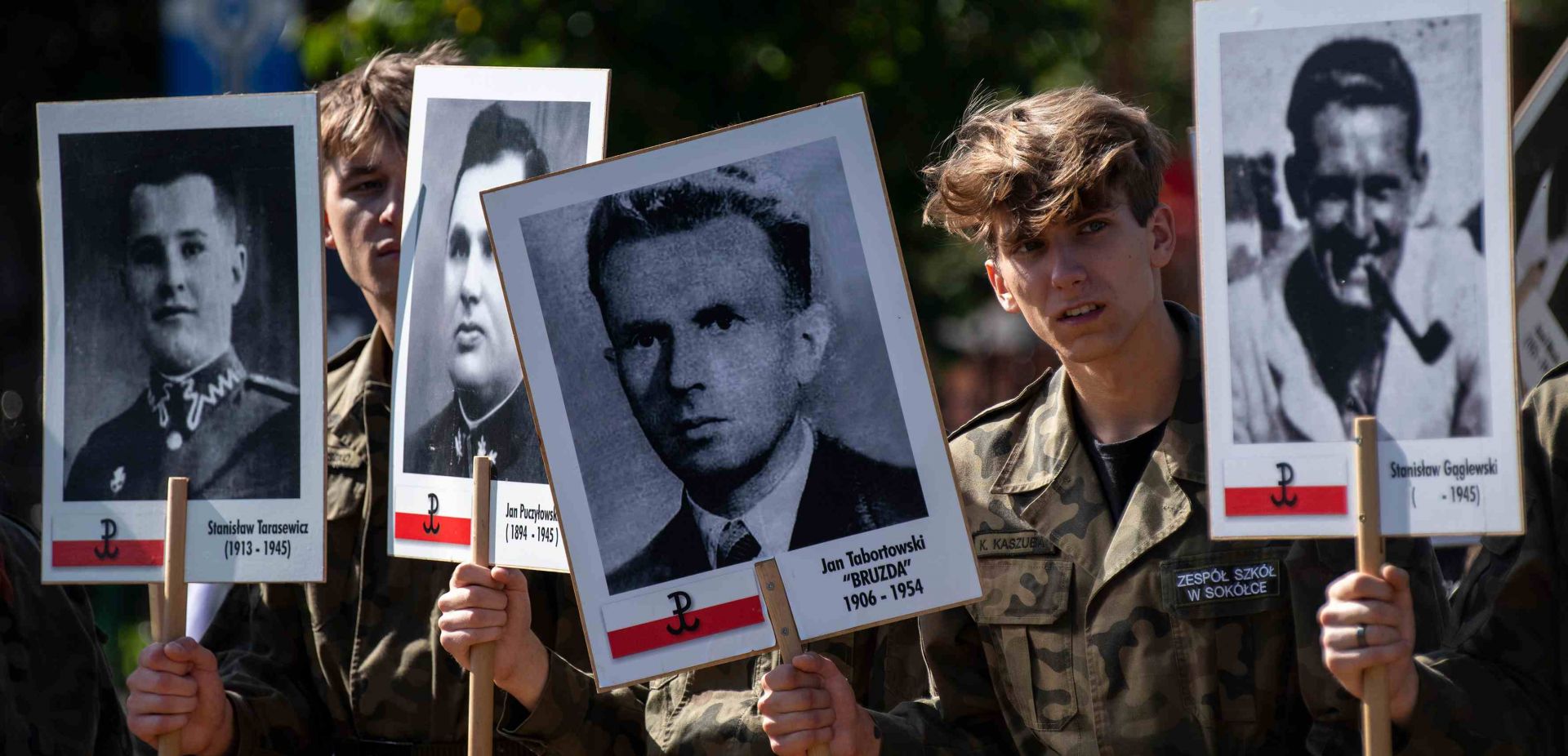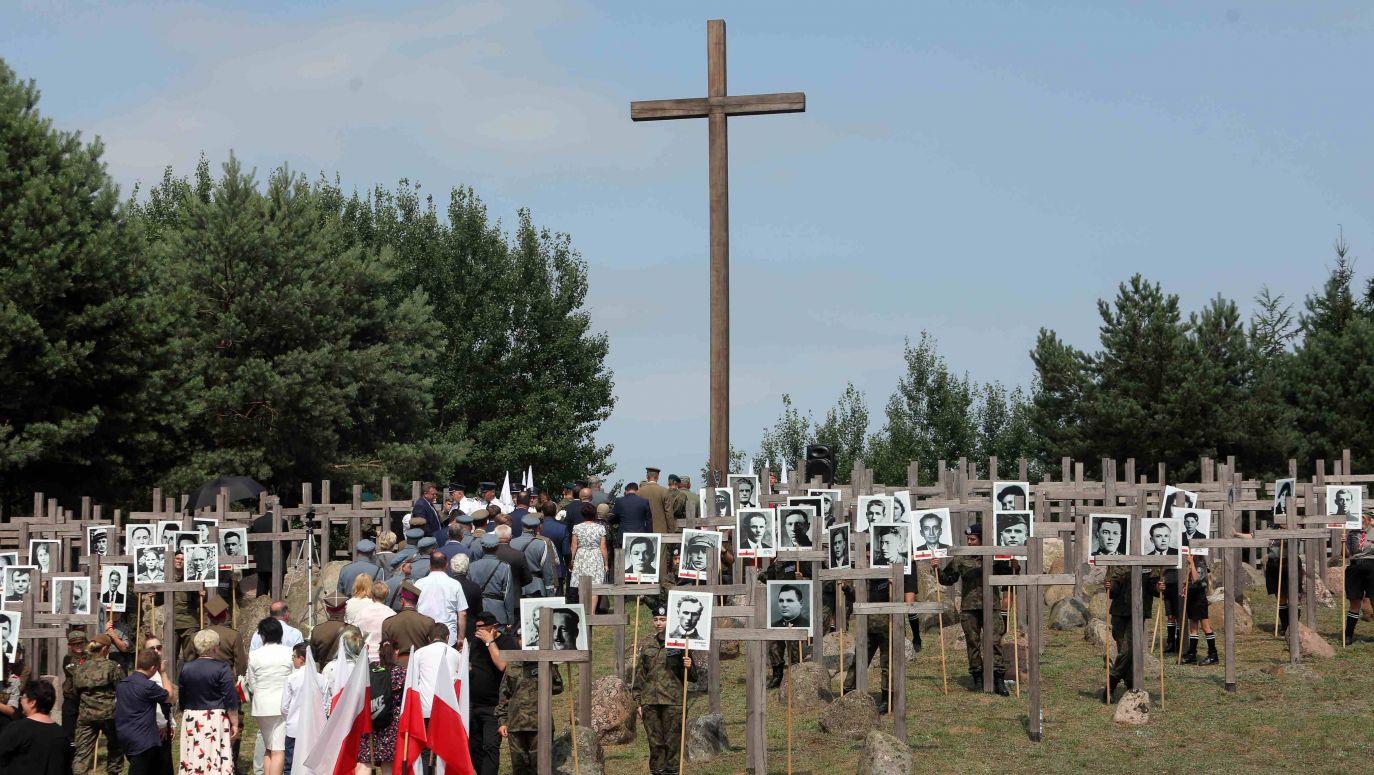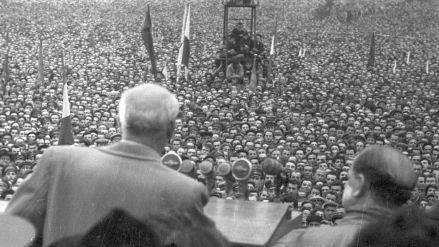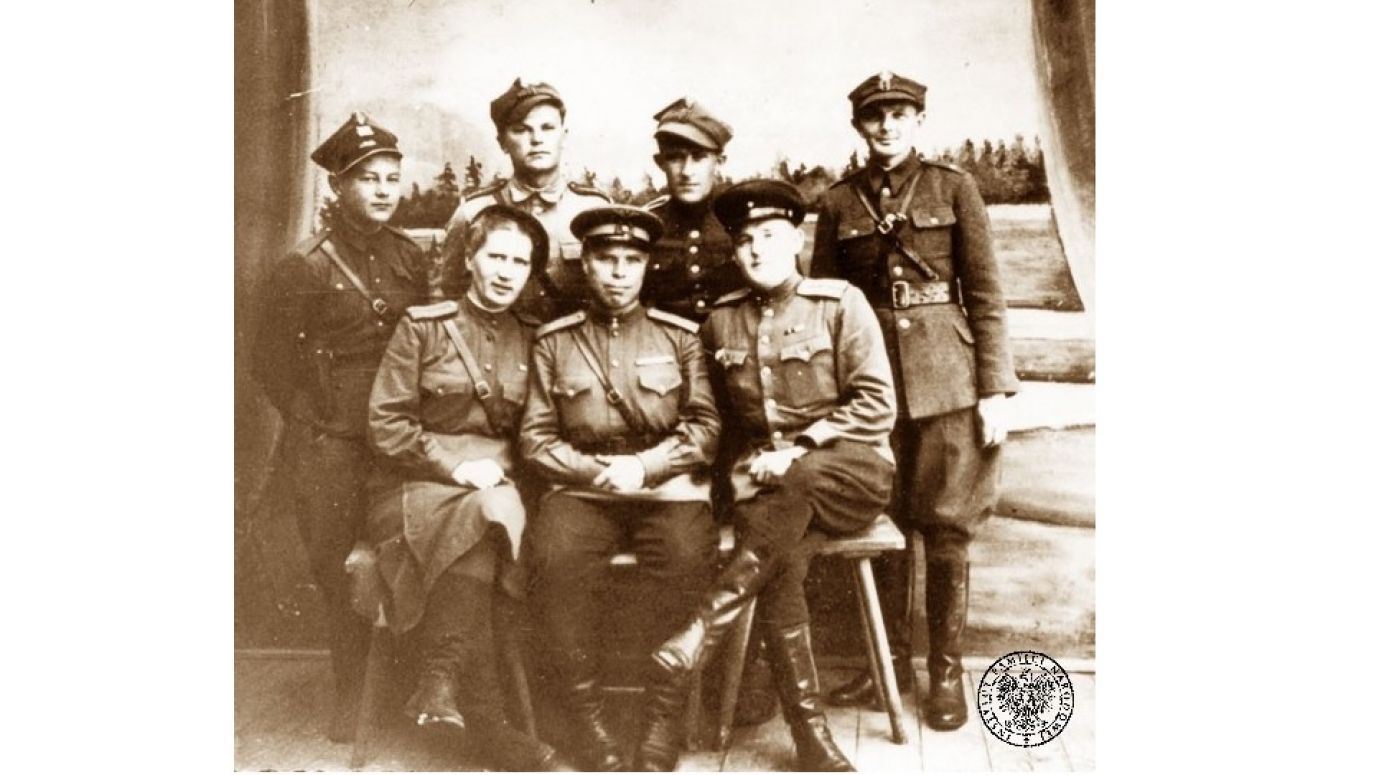The first to approach were the troops fanned out at 5-8 metre intervals, then the second line and finally the heavy equipment with artillery. In less than two weeks, in July 1945, 7049 people were arrested, including 1675 Lithuanians.
After a few days 5115 inhabitants of the Augustów Forest area, including 1711 Lithuanians were released. The negatively verified Lithuanians were handed over to the security apparatus in Lithuania. The Poles were transported to the East or – as people would have said – in an unknown direction. All traces of them have been lost. Nothing either is known about the people handed over to Lithuania – even though there may have been Poles among them.
Feeble people’s power
In the vicinity of the Augustów Forest the independence underground drew its strength from the patriotic conduct of the local people; at the end of WW II this traditional patriotism was reinforced by the fresh memory of red Red Army’s rapes and pillages. All the more so as the terrain was tyrannised by the rear units which arrested suspected anti-communists and robbed the population.
At the turn of 1944 and 1945 the independence underground in the Białystok voivodship suffered heavy losses. For before the Eastern Front moved into this area, AK units had cooperated with the Soviet partisan movement, especially during Operation Tempest. So, when the Red Army arrived there, the NKWD apparatus knew perfectly well whom to arrest. When the Red Army advanced westwards, the forest troops – despite losses – resumed their intense activity.
 SIGN UP TO OUR PAGE
SIGN UP TO OUR PAGE

The Home Army (known as the Citzens’ Home Army after being disbanded on March 19, 1945) liquidated Citizens’ Militia stations and informers collaborating with the new authorities. In 1945, in the Suwałki poviat (county, district) out of 14 communist municipal offices only two were functioning, the rest having been liquidated by the partisans. Therefore, the “people’s power” was practically non-existent.
Soviet soldiers and functionaries were also targeted by the underground. During the “first Soviet” (i.e. 1939-1941) and in the spring of 1945, Home Army partisans annihilated between 20 and 50 Soviet soldiers and functionaries.
Meanwhile, in July 1945 généralissime Joseph Stalin would travel through this very region of Białystok to the Potsdam Conference near Berlin. And the safety of the leader of the world proletariat was crucial here. But there were other reasons for the Augustów Roundup.
It was an area bordering the already Soviet Belarus and Lithuania, as well as the part of Prussia just annexed by the Soviets, later called the Kaliningrad District. The road from Prussia to the depths of the Soviet Union led through the northern Białystok region. The Red Army transported the captured goods there, including driving huge herds of cattle, which were intercepted by “forest men” from the Home Army.
As long as the war with Germany lasted, the power of the Polish communists could not be properly supported by the Soviet army, which the officials of the Polish Workers’ Party constantly strived for. The situation changed after the war, when the 50th Army of the III Belorussian Front was marching back home and could be used in the pacification of the Augustów area.
Eliminate everyone
The Augustów Roundup began on July 12, 1945. Already on July 11, in the area neighbouring Soviet Lithuania, the 2nd Guards Tank Corps of the III Belorussian Front began operations towards the south-west. The villages around the Augustów Forest and the forest itself were surrounded the next day.
The Russian staff officers expected resistance from an army of 8,000 partisans, equipped with tanks and artillery… so it is no surprise at all that they deployed some 50,000 thousand men. It has remained unknown to this day whence the Russians took the information about the power of the “forest men” in the forest.

 SIGN UP TO OUR PAGE
SIGN UP TO OUR PAGE
 The Home Army (known as the Citzens’ Home Army after being disbanded on March 19, 1945) liquidated Citizens’ Militia stations and informers collaborating with the new authorities. In 1945, in the Suwałki poviat (county, district) out of 14 communist municipal offices only two were functioning, the rest having been liquidated by the partisans. Therefore, the “people’s power” was practically non-existent.
The Home Army (known as the Citzens’ Home Army after being disbanded on March 19, 1945) liquidated Citizens’ Militia stations and informers collaborating with the new authorities. In 1945, in the Suwałki poviat (county, district) out of 14 communist municipal offices only two were functioning, the rest having been liquidated by the partisans. Therefore, the “people’s power” was practically non-existent.






